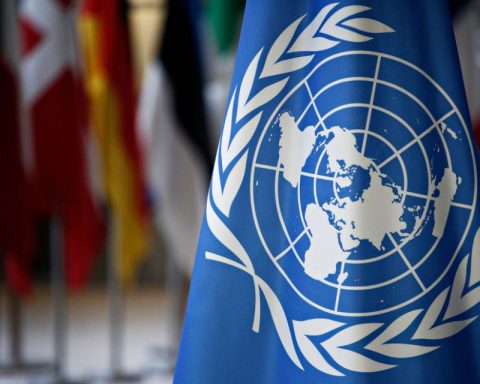Caracas, Barquisimeto, Valencia and Maracaibo experienced between 80 and 90 days of heat attributable to climate change
The most recent report by the Independent Organization Berkeley Earthin 104 countries new heat records were recorded last year, compared to 2024, which was considered the warmest.
Venezuela is among those nations with an average of 1.7 more compared to the period 1951-1980 and surpassing 2023, when it registered 1.3 ° C more compared to the same period.
In 2024, at least five climatic reports of independent organizations included Venezuela as one of the countries most affected by heat and a severe drought; with more exposure to diseases transmitted by mosquitoes and a loss of work capacity due to heat.
As there is also deterioration in the coverage of drinking water, Venezuela is exposed to a higher mosquito risk rate (MORI) in most years and compared to the rest of the region. By 2022, the capacity of the Aedes Aegypti mosquito, dengue transmitter, increased 47 %.
According to the central climate, four Venezuelan cities experienced between 80 and 90 days of heat attributable to climate change: Caracas, Barquisimeto, Valencia and Maracaibo. For this year, a cooling pattern is expected in the Equatorial Pacific; However, 2025 will probably be the third warmer registered year.
*Also read: Táchira Civil Protection warned of heat wave with temperatures that exceed 39 ° C
Record temperatures on land and oceans
Berkeley Earth, based in California, United States, points out that 24% of the planet had an annual average record at the local level, including 32% of land areas and 21% of oceanic areas.
The land regions, where the human population lives, have heated about 70% faster than the oceans.
It is estimated that 3,300 million people – 40% of the world’s population – experienced a warmer annual record at the local level in 2024. This figure includes two thirds of the population of China; Most of the populations of Brazil, Nigeria, Ethiopia, Mexico; a third of the United States; much of South and Central America; and Eastern Europe.
In South America, the countries that experienced their warmest are: Brazil, Colombia, Guyana, Paraguay, Surinam and Venezuela.
What were the causes of heat in 2024?
Berkeley Earth detected an increase of 1.62 ° C, the second time in its annual report, that the increase in global average temperatures exceeds 1.5 ° C, after 2023.
Meanwhile, NASA records an increase of 1.47 ° C above pre -industrial levels; The National Oceanic and Atmospheric Administration of the United States (NOA) indicates an increase of 1.46 ° C above preindustrial levels; and the World Meteorological Organization (OMM) places an average increase of 1.55 ° C.
Although there are differences, scientists agree that 2024 is the warmest in the records and the increase in temperature and It was mainly due to the continuation of climate change caused by man and the El Niño Meteorological Phenomenonwhich tends to raise global temperatures.
However, they expected temperatures to decrease once the child ended in May 2024, but remained at record levels for the rest of the year.
Is the objective of the Paris agreement unattainable?
A year above the 1.5 ° C threshold, technically, it does not indicate a formal breach of the objective, since it is calculated using an average of 20 years, but “the new steep records established in 2023 and 2024 are added to other evidence that recent global warming seems to advance faster than expected. It remains to be seen if the increase in global warming is a temporary change or part of a new long -term trend, ”explains Dr. Robert Rohde, one of Berkeley Earth’s scientists, in a press release.
However, “the objective of the Paris Agreement to remain below 1.5 ° C is already unattainable, and the long -term average will exceed this milestone in the next five to ten years,” he adds.
*Journalism in Venezuela is exercised in a hostile environment for the press with dozens of legal instruments arranged for the punishment of the word, especially the laws “against hatred”, “against fascism” and “against blockade.” This content was written taking into consideration the threats and limits that, consequently, have been imposed on the dissemination of information from within the country.
Post views: 587
















